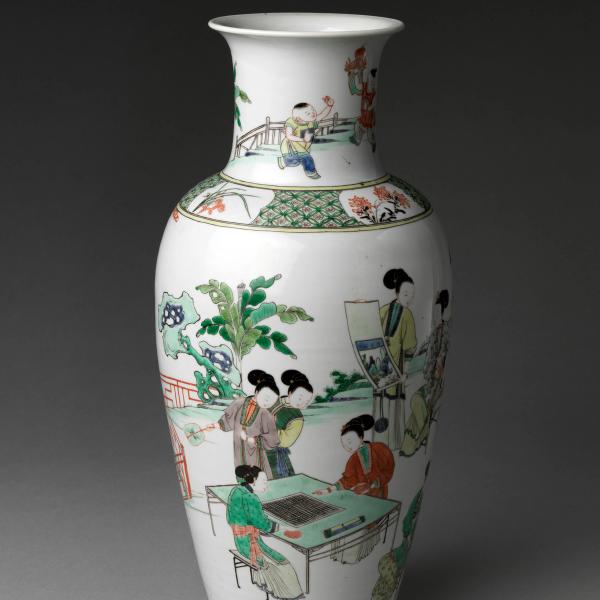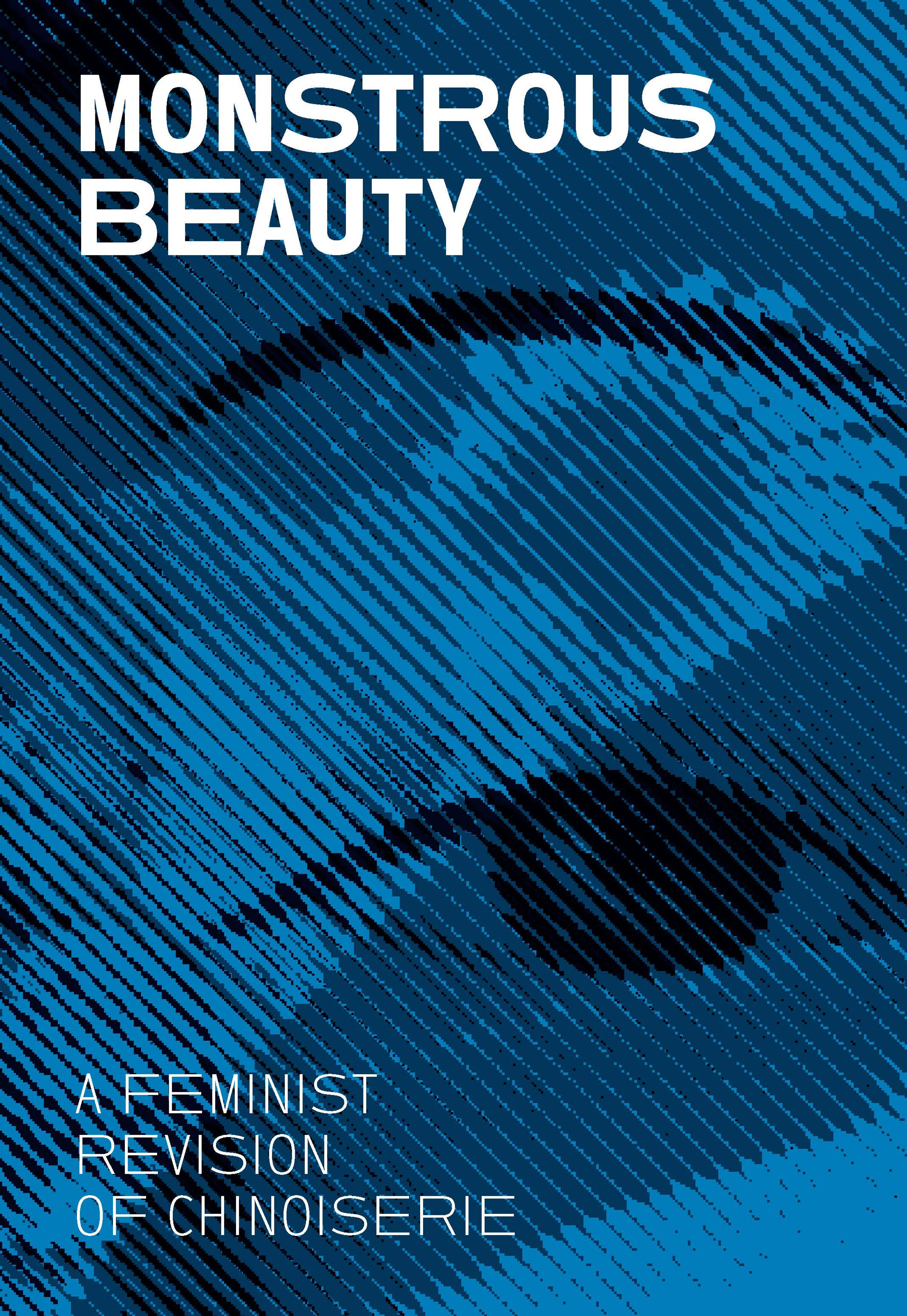Vase with Women Enjoying Scholarly Pursuits
Artwork Details
- Title: Vase with Women Enjoying Scholarly Pursuits
- Period: Qing dynasty (1644–1911), Kangxi period (1662–1722)
- Date: late 17th–early 18th century
- Culture: China
- Medium: Porcelain painted with colored enamels over transparent glaze, and gilded (Jingdezhen ware)
- Dimensions: H. 16 15/16 in. (43 cm)
- Classification: Ceramics
- Credit Line: Bequest of John D. Rockefeller Jr., 1960
- Object Number: 61.200.67
- Curatorial Department: Asian Art
Audio

504. Transitional Period
Vase with women enjoying scholarly pursuits, late 17th–18th century
IRIS MOON: What you’re looking at is a Chinese vase from what’s known as the transitional period, and it’s decorated with women enjoying a leisurely day outside, playing games and conversing, with children.
MICHELLE ZAUNER (NARRATOR): By the late 1600s, women began appearing on porcelain as decorative motifs. This wasn’t just an aesthetic choice among manufacturers. It was by necessity: as Iris explains, after the fall of the powerful patrons at the Ming court…
MOON: The major kilns in Jingdezhen, which produced much of the porcelain in China, were completely destroyed as a result of political unrest and war.
ZAUNER: When the kilns in Jingdezhen reopened they looked to new markets.
MOON: They started to turn to more middle-class and upper-middle-class contexts rather than the court, and that resulted in the incorporation of popular prints and romances that featured figures, particularly women, that created a kind of association in the collective imagination with the feminine.
Now the question of gender and porcelain collecting is quite interesting because initially, in the Renaissance, collecting porcelain as a rarity was very much seen as a male and princely pursuit.
ZAUNER: One of the most prominent early European collectors was Augustus the Strong, whose personal collection quickly swelled to more than 20,000 pieces.
You can see examples that he commissioned across the galleries, from a lidded blue and white vase made for his palace to a red stoneware Guanyin. He claimed—with pride—that he had “the porcelain sickness.”
MOON: And yet, on the other hand, when a woman has an obsession and desires this material, it becomes unnatural and pathologized in a way that could never produce anything good.
More Artwork
Research Resources
The Met provides unparalleled resources for research and welcomes an international community of students and scholars. The Met's Open Access API is where creators and researchers can connect to the The Met collection. Open Access data and public domain images are available for unrestricted commercial and noncommercial use without permission or fee.
To request images under copyright and other restrictions, please use this Image Request form.
Feedback
We continue to research and examine historical and cultural context for objects in The Met collection. If you have comments or questions about this object record, please contact us using the form below. The Museum looks forward to receiving your comments.
